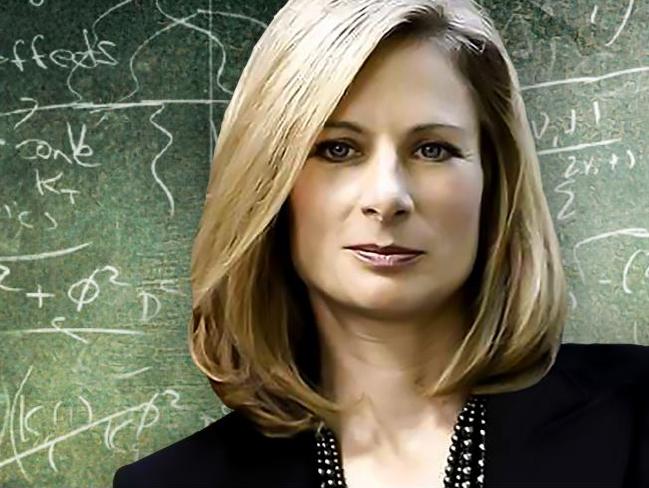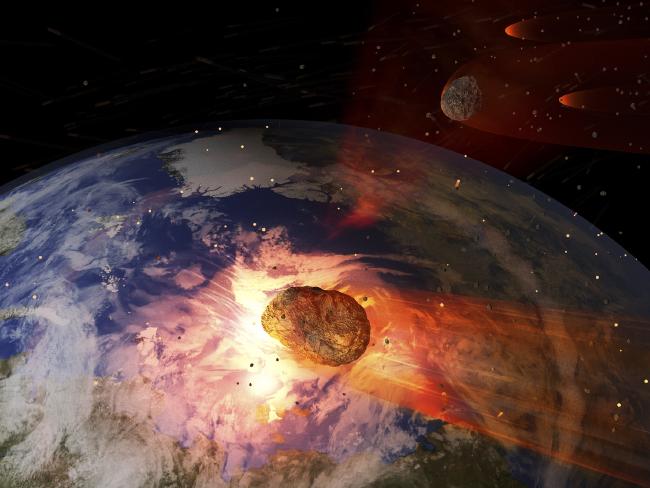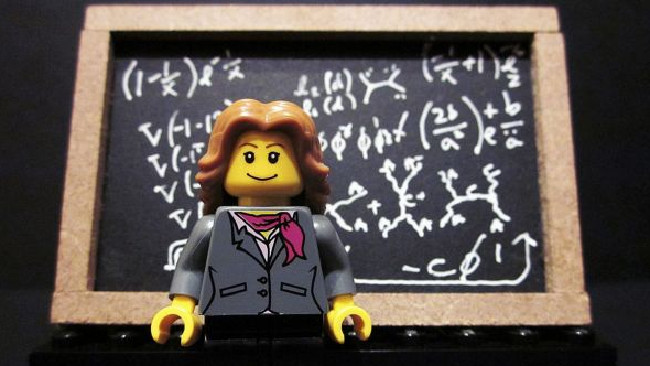
Dr Lisa Randall is bringing her creative and imaginative brand of particle physics to Australian audiences.
IT’S hard to find a more unique scientist than Lisa Randall.
The accomplished theoretical physicist and cosmologist is intent on imbuing the world of particle physics with the power of a radical imagination.
Dr Randall has developed breakthrough theories about extra dimensions known as the five dimensional warped geometry theory. She has proposed a new hypothesis on dark matter which suggests the mysterious substance that dominates the universe played a role in killing the dinosaurs. And she thinks we should hold off on colonising Mars until we’ve spent more time in the Australian outback.
When you look at her body of work, it quickly becomes clear why she’s been dubbed “America’s superstar scientist”.
Dr Randall works in areas that are home to some of the biggest mysteries in the universe — and she displays an uncanny ingenuity when trying to solve them.
“My attitude in science is to pick out the possibilities, find hypotheses, test them and move onto other things,” she says.
In her earlier work she tackled the idea of extra dimensions, proposing the existence of a fourth and fifth dimension (in addition to the three that we’re familiar with) that humans are unable to perceive. The once radical idea has become widely praised and spawned the Randall — Sundrum models which map out the extra dimensions.
So far the Large Hadron Collider has not been able to prove the existence of these extra dimensions and Dr Randall believes the particle-smashing machine at the European Organisation for Nuclear Research CERN in Switzerland might not be powerful enough to do so.
But if we ever do find a way to observe these extra dimensions, she is certain to be up for a Nobel prize.

Dr Lisa Randall will be in Brisbane, Melbourne and Sydney from November 17 to 19.Source:Supplied
In her more recent work she has turned skyward to wonder about the mysterious substance that makes up 85 per cent of the universe known as dark matter.
She realised there were new ways to look at the issue of dark matter that she says “people just hadn’t recognised were possible”.
“There’s just a lot of interesting possibilities that people have not investigated,” she told news.com.au.
In her latest critically acclaimed book Dark Matter and the Dinosaurs, she explores both the cosmos and the demise of the dinosaurs and shows how the two could be inextricably linked.
Roughly speaking, she puts forth a novel understanding of dark matter which suggests a fraction of the mysterious matter — which neither emits nor absorbs light but is beholden to gravity — behaves differently to the rest of it.
Dark matter tends to cluster together in dense pockets in the universe but Dr Randall thinks there could also be a flatter, denser disc of dark matter hiding in our galaxy that in addition to being responsive to gravity also interacts with a force similar to electromagnetism. If true, it would have a significant gravitational influence on the behaviour of our solar system.
“If you have a dense disc of this dark matter it can actually affect the solar system as it orbits in the galaxy,” she said.
The idea is that as the solar system travels around the Milky Way the dense disc of dark matter would perturb the orbits of comets, slinging them from a distant region of the galaxy known as the Oort Cloud causing them to periodically pepper Earth.
This, she believes, is what could have happened to the dinosaurs some 66 million years ago.
“I want to make it clear that I know it’s a speculative theory,” she said. But it’s one she used “to frame the book” in order to allow the reader to explore new ideas about cosmology, the solar system, palaeontology and mathematics.

An illustration of a large asteroid impacting Earth which is believed to have wiped out the dinosaurs.Source:Supplied
Dr Randall is heading to Brisbane, Melbourne and Sydney next week to further bring her imaginative brand of science to Australian audiences.
The tour is organised by Think Inc. which has brought some of the most popular minds in science to Australia including Dr Neil deGrasse Tyson, Dr Michio Kaku and Dr Brian Greene — the renowned string theorist who also happens to be her old high school classmate.
But when it comes to particle physics Dr Randall is about as credentialed as they come.
She earned a Bachelors in Physics and a PhD in theoretical particle physics from Harvard University in 1983 and 1987 respectively. She has held professorship at the prestigious university since 2001 after professorial stints at MIT and Princeton University.
She is the first female theoretical physicist to hold tenure at Harvard University — an accolade that is no doubt a source of great pride and disappointment as she has been very vocal about the need for more women in powerful positions in science.
Dr Randall hasn’t gone unnoticed by popular culture either. In 2007 she was listed in Time Magazine’s 100 Most Influential People and was recently honoured by Lego with her own character as a part of a series celebrating women in science.

Dr Randall has even been immortalised as a Lego character.Source:Supplied
When it comes to arguably the sexiest pursuit in science right now, the colonisation of Mars, Dr Randall is less bullish than some others who are pursuing the ambitious goal with gusto.
She believes the incredibly harsh environment on Mars is not somewhere humans need to be and we should instead focus on better harnessing and protecting the resources we have on Earth.
“How much time have you spent in the outback of Australia?” she asked rhetorically.
“Mars is really far away and even way more unpleasant than the outback, so maybe you should colonise the outback first,” she joked.
“I just think we have to think realistically about what it would mean to colonise something that is so inhospitable.”
For her part she plans to keep her feet planted firmly on Earth, dreaming up new ideas to probe the big mysteries of science.
“As we know experiments and observation are expensive and we want to get the most out of them,” she said. “By thinking creatively about the possibilities we can learn a lot more. We learn what to look for.”
As one of the world’s communicators in particle physics she hopes the sciences continue to be given the attention and support they often need to survive.
“If you don’t see an immediate benefit it’s the first thing to go these days,” she said.
“I don’t think people realise what science is ... and the importance of just letting people be creative and think. Obviously not in just crazy random ways but basic science has made tremendous advancements and I would like to see that continue.”
Dr Lisa Randall will be in Brisbane, Melbourne and Sydney from November 17 to 19. You can find details here.
End of the Universe50:05

Three theories about the universe's fate come to life, as we explore the battle between dark matter and dark energy, and whether the cosmos will collapse, freeze, or rip to oblivion.







